Personal blog and influencer sites created by BG WEBSITE – sayt.bg
Introduction to the world of influencers
Influencers are a new category of online personalities who influence public opinion and consumer behavior. They can be experts in a variety of fields, from fashion and cosmetics to technology and healthy lifestyles. Building an online presence is essential for influencers, and a personal website is a key element in their communication strategy.
Видове сайтове, раразботвани от САЙТ БГ

Building Your Personal Website: A Comprehensive Guide for Influencers
Introduction to Personal Websites for Influencers
In today’s digital landscape, influencers play a pivotal role in shaping opinions and driving trends. To maximize their reach and effectiveness, establishing a personal website has become increasingly essential. A personal website serves as a centralized hub where influencers can showcase their content, communicate their brand identity, and engage with their audience more meaningfully. This digital platform not only consolidates diverse forms of content—such as blogs, portfolios, and multimedia—but also enhances the influencer’s visibility across search engines, ultimately attracting a broader audience.
Unlike social media profiles, which are often constrained by platform algorithms and can change with new policies, a personal website offers influencers complete control and ownership over their content. This autonomy allows influencers to curate their narratives and present their brand in ways that align with their unique values and goals. They have the ability to customize their design, optimize for search engines, and utilize various forms of media—something that social media platforms might limit. Moreover, personal websites empower influencers to build a reliable email list, fostering direct communication with their audience and creating an exclusive space for fan engagement.
Furthermore, personal websites can be instrumental in establishing credibility and professionalism. By having a dedicated website, influencers signal to their audience and potential business partners that they are serious about their brand. This can lead to enhanced opportunities, such as collaborations and sponsorships that may not be available through social media alone. As the influencer landscape becomes more competitive, establishing a robust online presence through a personal website is not just an advantage; it is becoming a necessity for those seeking sustainable success in their careers.
Choosing the Right Domain Name
Selecting an effective domain name is a critical step in establishing a personal website, especially for influencers seeking to create a lasting online presence. A memorable domain name is not only essential for brand recognition but also helps convey the essence of one’s identity or mission. To begin brainstorming ideas, influencers should consider their niche, target audience, and the primary message they wish to communicate. Utilizing a list of keywords relevant to their brand can spark creativity and lead to unique domain name possibilities.
Once a shortlist of potential names is established, checking availability is the next crucial step. Many websites offer a simple interface for checking if a desired domain name is already registered. It’s advisable to explore variations of the name, considering different spellings or additional words if necessary. Additionally, influencers should keep in mind that a .com domain is often preferred due to its universal recognition and credibility among users. While alternative extensions like .net, .org, or even new generic top-level domains (gTLDs) can be viable options, a .com domain tends to foster greater trust.
Branding implications should also be considered when choosing a domain name. A domain that aligns well with personal branding can enhance an influencer’s visibility and accessibility online. Influencers should aim for simplicity and clarity; a complex or lengthy domain may increase the likelihood of typos and misunderstandings. Furthermore, consistency is crucial, so it is advisable to ensure that social media handles align closely with the chosen domain name, enhancing cross-platform recognition. Overall, a powerful domain is more than just an address; it serves as the foundation for an influencer’s online persona and connectivity with their audience.
Deciding on a Web Hosting Platform
When building a personal website, selecting the appropriate web hosting platform is crucial for influencers aiming to establish a strong online presence. There are numerous options available, each offering distinct advantages and disadvantages. Popular platforms such as WordPress, Squarespace, and Wix have gained prominence due to their varied features tailored to different user needs.
WordPress is often regarded as the most flexible option for website development. It provides an extensive array of plugins and themes, allowing influencers to customize their sites extensively. However, it may require a steeper learning curve, particularly for those unfamiliar with website design or coding. The pricing of WordPress can vary, with costs associated with hosting, themes, and plugins potentially adding up.
Conversely, Squarespace is celebrated for its visually appealing templates and user-friendly interface. It is a particularly good choice for influencers who prioritize aesthetics and ease of setup. Squarespace’s all-in-one service includes hosting, domain registration, and support, simplifying the initial setup phase. Nevertheless, the customization options may be somewhat limited compared to WordPress, which could be a consideration for those seeking a highly personalized website.
Wix stands out with its drag-and-drop website builder, making it exceptionally user-friendly. This platform is ideal for influencers who may lack technical expertise yet wish to create a professional-looking website swiftly. While Wix offers a range of templates and customization features, its pricing may become a concern, especially when users desire additional functionalities.
Ultimately, the choice of web hosting platform depends on an influencer’s specific needs, technical proficiency, and budget. Evaluating the pros and cons of each option is essential to ensure a website that aligns with their personal brand and online objectives.
Designing Your Website: Layout and Aesthetics
When creating a personal website as an influencer, the design plays a pivotal role in shaping user experience and establishing your online presence. A thoughtfully designed website can set the tone for your personal brand, making it essential to prioritize both aesthetics and functionality.
One of the first steps in the design process is choosing an appropriate color scheme that aligns with your personal branding. Colors evoke emotions, and the right palette can create a welcoming and engaging atmosphere. Opt for a harmonious blend of colors that reflect your personality and message, ensuring that they are not overly saturated or distracting. Tools and resources are available online to help you visualize color combinations and see how they interact with each other.
Additionally, typography is a critical component of website aesthetics. Selecting fonts that are legible and align with your brand identity is vital. It is advisable to limit your font choices to two or three families to maintain a cohesive look throughout the site. Clear and concise headings will enhance navigation while ensuring visitors can quickly digest content.
In terms of layout, it is crucial to prioritize user-friendly navigation. A well-organized layout allows visitors to find information easily, which is essential for keeping them engaged. Consider employing a grid system to structure your content, ensuring that elements have clear visual hierarchy. This approach not only enhances the overall look but also improves usability, enabling users to navigate your site intuitively.
Ultimately, the convergence of color schemes, typography, and layout can profoundly impact the overall user experience on your website. Taking the time to thoughtfully design your site will lead to a visually appealing and functional platform, effectively representing your unique identity as an influencer.
Creating Compelling Content: Blogs, Portfolios, and More
In the modern digital landscape, crafting compelling content is essential for influencers looking to establish their personal brand. An effective personal website serves as a central hub that not only showcases an influencer’s expertise but also engages visitors through various content types. Key among these are blogs, portfolios, and galleries, each playing a unique role in communicating your brand’s narrative.
Blog posts are one of the most versatile content formats available to influencers. By regularly publishing well-written articles, you can establish yourself as an authority in your niche while providing value to your audience. When creating blog content, focus on topics that reflect your passions and areas of expertise. Utilize an authentic voice that resonates with your readers, and aim to offer unique insights or advice. Incorporating keywords related to your niche not only bolsters SEO but also enhances the discoverability of your blog, drawing in a larger audience.
Portfolios are another critical aspect for influencers, particularly those in creative fields. A carefully curated portfolio showcases your best work, highlighting your skills and experiences effectively. When assembling your portfolio, prioritize quality over quantity, selecting pieces that best represent your style and proficiency. In addition to visual appeal, provide context for each item—such as the project objectives, your role, and the outcomes achieved. This not only illustrates your capabilities but also tells a compelling story about your professional journey.
Galleries can serve as an excellent complement to both blogs and portfolios. They allow you to present visual content, whether through photography, illustrations, or design work. Ensure that each image is of high quality and complements your overall brand aesthetic. Linked captions can help to explain each work while providing additional insights into your creative process. As you develop these various content types, keeping a cohesive theme and aesthetic throughout your website will reinforce your brand identity and engage visitors more effectively.
Integrating Social Media and SEO
In the digital age, the interplay between social media and search engine optimization (SEO) is paramount for influencers looking to enhance their online presence. Integrating social media platforms with a personal website not only serves as a promotional tool but also aids in optimizing visibility on search engines. One of the most effective ways to promote content is by incorporating social media sharing buttons on the website. These buttons allow visitors to easily share content on platforms such as Facebook, Twitter, and Instagram, generating traffic that can translate into increased viewer engagement and potential followers.
Moreover, it is imperative to create content that resonates with both the audience and search engine algorithms. Using relevant keywords, optimizing title tags, and crafting thoughtful meta descriptions can significantly impact search rankings. For instance, when writing blog posts or articles on your personal website, ensure that the focus keyword is included in the headings and throughout the content. This practice improves the likelihood of appearing in search results for those terms, making it easier for potential followers to discover your work.
Another best practice is to ensure that your personal website is mobile-responsive and loads quickly. Search engines prioritize fast-loading sites and those that offer good user experience, which extends to how content is formatted across different devices. Furthermore, linking your social media profiles to your website can consolidate your online identity, helping search engines and audiences understand your brand better. Utilizing structured data can also improve visibility, as it helps search engines index your content more effectively. By combining these strategies, influencers can harness the full potential of social media interactions and SEO, enabling them to widen their reach and enhance their professional branding.
Building an Email List for Audience Engagement
Email marketing serves as a crucial avenue for influencers to establish and maintain a direct line of communication with their audience. Unlike social media platforms, where algorithms govern visibility, an email list allows influencers to reach their subscribers directly, fostering a sense of intimacy and trust. A well-structured email list can not only enhance audience engagement but also drive conversion rates, making it an essential tool in the influencer’s toolkit.
To effectively build an email list, influencers should consider implementing various strategies on their personal websites. One of the most effective methods is to offer valuable freebies to visitors in exchange for their email addresses. Free resources such as eBooks, exclusive content, or downloadable templates can entice potential subscribers. When crafting these offers, it’s vital to align them with the interests of the target audience which encourages genuine sign-ups.
Incorporating strategic sign-up forms on the website plays a critical role in email list growth. Influencers can utilize pop-ups, embedded forms within blog posts, or dedicated landing pages to invite visitors to subscribe. It is crucial to keep these sign-up forms user-friendly and straightforward, ensuring that the subscription process is seamless. Placing these forms in high-traffic areas of the website increases visibility, ultimately maximizing the chances of capturing new subscribers.
Moreover, maintaining regular email communication with the audience is essential for nurturing relationships. A consistent schedule of informative newsletters, personalized messages, or updates about new projects reinforces engagement and keeps followers interested. This ongoing dialogue helps to build a loyal community and encourages interaction, making the influencer feel more connected with their audience. Implementing these strategies will not only enhance audience engagement but also solidify the influencer’s presence in the digital landscape.
Analyzing Website Performance and Making Improvements
Monitoring and analyzing the performance of a personal website is crucial for any influencer striving to enhance user experience and engagement. Utilizing tools such as Google Analytics allows individuals to gather valuable insights regarding their website’s performance, audience behavior, and overall effectiveness. By effectively interpreting this data, influencers can identify strengths and weaknesses, leading to informed adjustments that optimize their online presence.
One of the first steps in analyzing website performance is to set up Google Analytics to track specific metrics. Key performance indicators (KPIs) such as page views, bounce rate, session duration, and traffic sources provide a comprehensive view of how visitors interact with the site. For instance, a high bounce rate may indicate that visitors are not finding the content engaging or relevant, prompting the necessity for a content reevaluation. Similarly, understanding where traffic originates can help influencers focus their marketing efforts on the most effective channels, whether they be social media platforms, newsletters, or collaborations.
Beyond simply gathering data, it is essential to delve into the demographics and behavior of the audience visiting the website. Analyzing user profiles allows influencers to tailor content to better meet their followers’ preferences and needs. This insight can inform decisions such as adjusting posting frequency, refining niche topics, or enhancing visual content. Moreover, conducting A/B testing for different design elements—such as call-to-action buttons and layout designs—can reveal what attracts and retains users most effectively.
In essence, regularly monitoring website performance and adapting strategies based on analytical insights empowers influencers to create a more engaging and user-friendly experience. This cycle of analysis and improvement is continuous; ongoing assessment and adjustment ensure the website remains relevant and appealing to its audience.
Creating a Long-Term Maintenance Strategy
Establishing a long-term maintenance strategy for your personal website is crucial to ensure its continued functionality and relevance. A well-maintained site not only enhances user experience but also strengthens your online presence as an influencer. This involves several key elements including content updates, security checks, and regular hosting renewals.
Content updates play a vital role in keeping your website engaging. As an influencer, your audience seeks fresh and relevant information. Regularly reviewing and updating your content ensures that it reflects current trends and maintains the interest of your audience. Consider setting a schedule, such as bi-weekly or monthly, for revisiting existing posts to enhance them or add new insights. Additionally, incorporate seasonal content or promotional events that align with your niche to draw in viewers.
Another critical aspect of your maintenance strategy is performing security checks. The digital landscape is evolving, and websites are often targeted for vulnerabilities. To counteract potential threats, make it a practice to regularly update your website’s plugins and themes, ensuring that they are compatible with the latest security protocols. Utilizing reliable security plugins can provide further protection and will notify you of any issues. It is also advisable to create regular backups of your website’s data, ensuring you can restore it quickly in case of a security breach.
Lastly, hosting renewals should not be overlooked. Ensure that you are aware of your hosting provider’s renewal dates to avoid unexpected downtime. Evaluate your hosting plan annually to determine if it continues to meet your needs, allowing for scalability if your website grows. Consider all these elements as part of a comprehensive website maintenance checklist: content updates, security measures, and hosting management. By implementing a robust maintenance strategy, your personal website can remain a dynamic and effective representation of your brand.





No comment yet, add your voice below!